All products featured are independently chosen by us. However, SoundGuys may receive a commission on orders placed through its retail links. See our ethics statement.
HyperX Cloud II Wireless vs HyperX Cloud Flight S
March 7, 2022
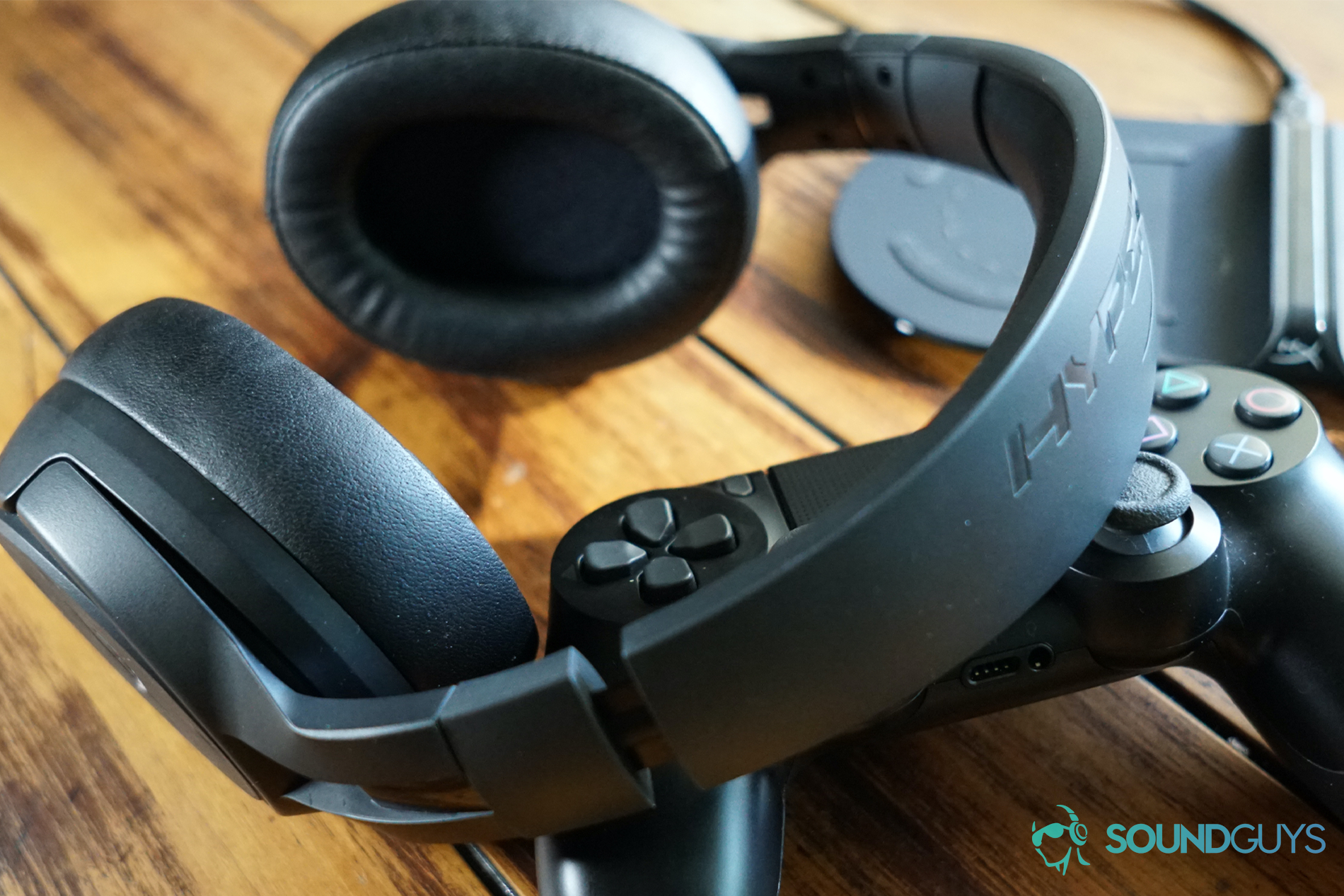
HyperX has made some of the best gaming headsets on the market for years now, and while many of its products cover different segments of the market, there’s a lot of crossover. When you get down to it, there just aren’t that many boxes to check before a gaming headset has widespread appeal, regardless of your platform or favorite game genre. The HyperX Cloud Flight S and HyperX Cloud II Wireless are great examples of this conundrum—both offer almost identical features, and execute on them very well, pretty much across the board. They’re even similarly priced.
So which one should you get?
Editor’s note: This post was updated on March 7, 2022 to include new charts for both headsets based on our updated testing methodology.
The HyperX Cloud II Wireless features a more premium build
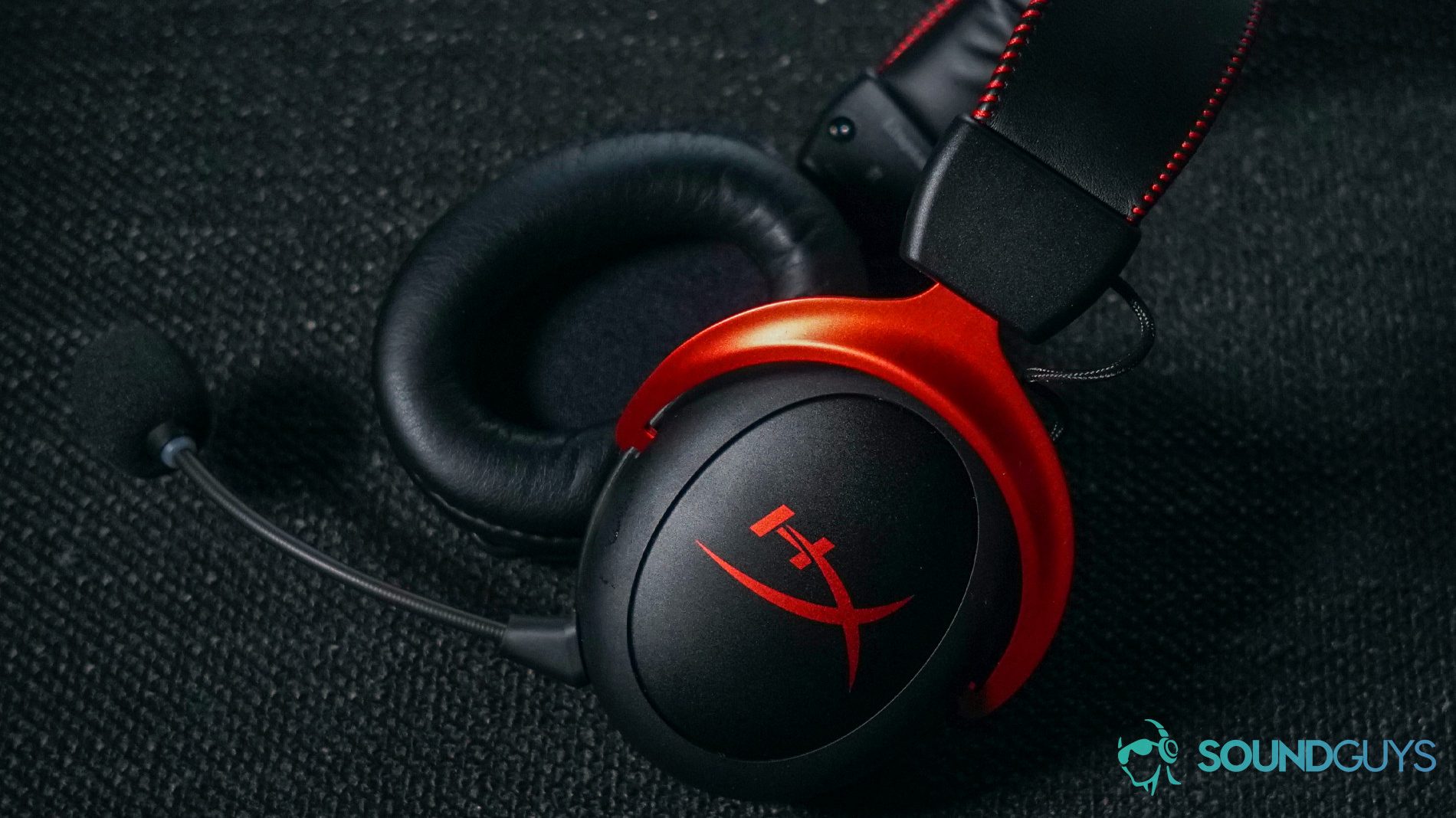
Both the HyperX Cloud Flight S and Cloud II Wireless are very well-built gaming headsets, but if there’s one place the two headsets diverge, it’s here. The HyperX Cloud II Wireless has that classic HyperX look—hard plastic ear cups, an aluminum frame, and thick memory foam cushions covered in leatherette. There’s even the same black and red look as you’ll find with headsets like the HyperX Cloud Alpha. Basically, it looks pretty slick, and it’s sturdy and comfortable to boot.
The HyperX Cloud Flight S is also a comfortable gaming headset, but it’s very different. This headset sports an all-plastic build, headphones that rotate to lie flat, and memory foam cushions covered in leatherette that aren’t quite as thick as the Cloud II. It feels plenty sturdy, though obviously not to the same degree as the all-metal Cloud II Wireless, and there’s a little bit of the creakiness that inevitably comes from all-plastic frames. Both headsets have no issue achieving a seal around the ear, regardless of head shape.
The HyperX Cloud Flight S offers more on-ear control
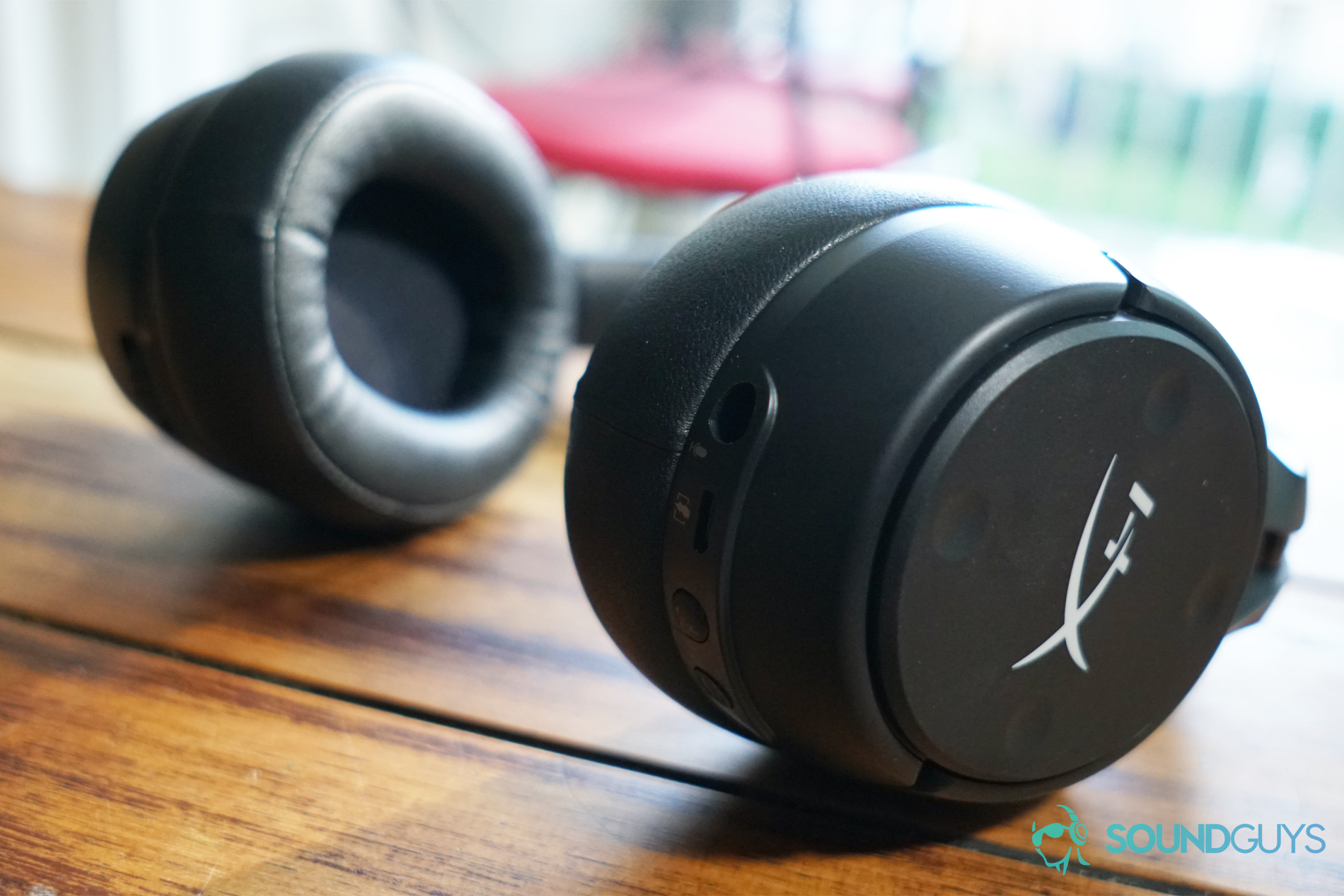
Both headsets feature an array of on-ear controls that let you adjust your settings on the fly. The HyperX Cloud II Wireless keeps things simple, with a mic mute button, volume dial, and a power button. This makes more granular adjustments require access to the HyperX NGenuity app, but it also keeps things simple while you’re in game—you won’t have any trouble telling what button you’re touching as you focus on encroaching enemies in Apex Legends.
The HyperX Cloud Flight S offers quite a few more hardware control options. The headset features similar controls to the Cloud II Wireless along its bottom edges, like a volume dial and power button, as well as a button for toggling the built-in 7.1 virtual surround sound. However, the headset also has four buttons on its left side, which control features like sidetone/mic monitoring, mic muting, and game/chat balance adjustments by default. This design takes a little getting used to, but it keeps the layout from feeling cluttered and leaves you with a lot more on-the-fly options while in game.
NGenuity works with both, but the HyperX Cloud II Wireless needs it more
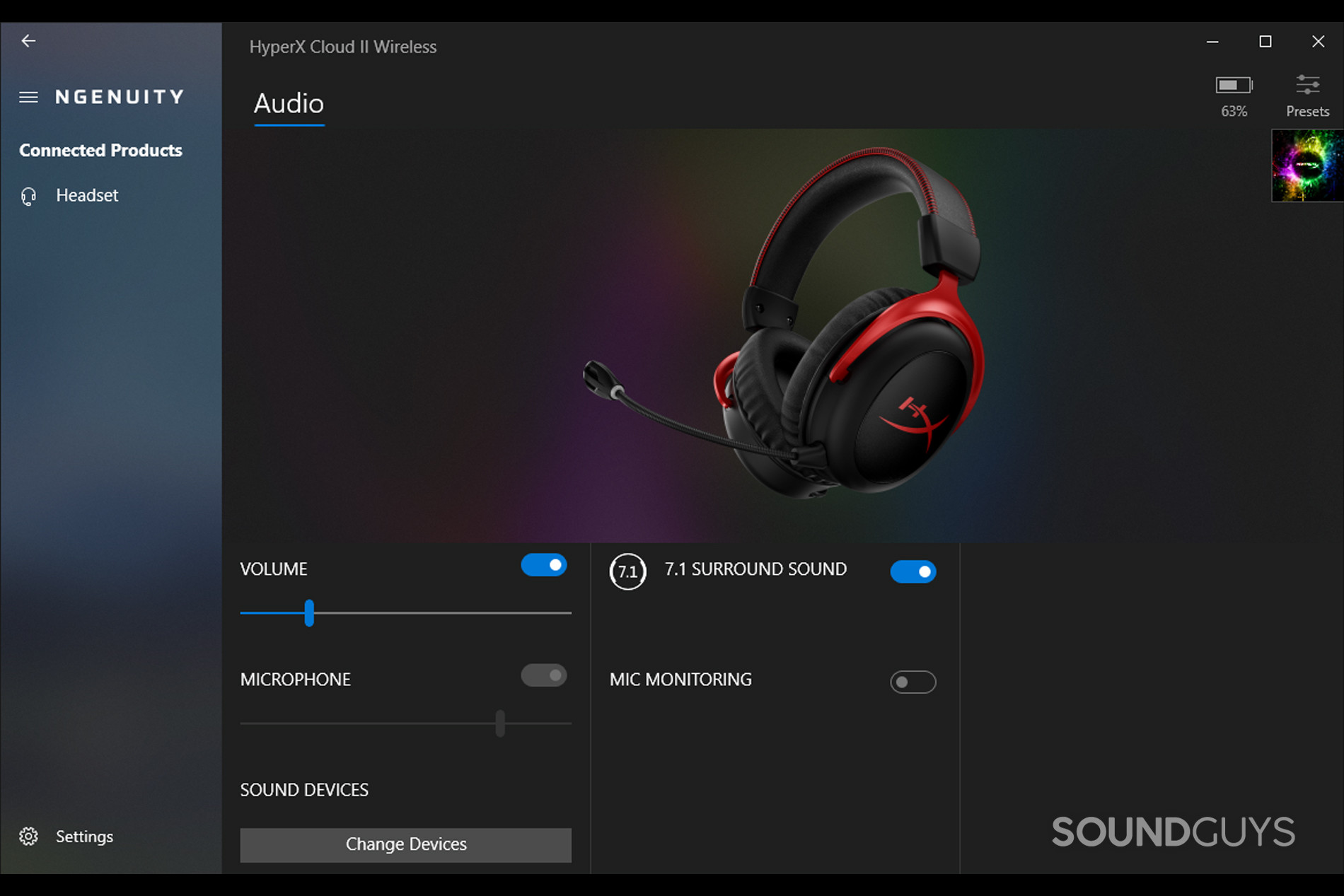
Like every other gaming headset maker, HyperX uses a companion app to round out the featuresets of its gaming headsets. As such, both the HyperX Cloud Flight S and Cloud II Wireless are compatible with the HyperX NGenuity app, at least to varying degrees. Using the app with the Cloud Flight S, you can adjust volume and mute both the headphones and the mic, but the real draw is being able to remap the buttons on the side panel. The side buttons are programmable, so you can set them to do the typical gaming headset functions, or handle playback control, or even just swap them around if you don’t like where the mic mute button is—you can’t implement custom key binding, but there’s a rather lengthy list of options in the app.
The HyperX Cloud II Wireless isn’t as customizable as the Cloud Flight S, but it’s more reliant on NGenuity for the full gaming experience—you can only access virtual surround sound by turning it on in the app. The headset also features the same volume and mute controls on the software side as the Cloud Flight S. It’s also worth noting that NGenuity is the only place you can get a battery life indicator for either headset.
The HyperX Cloud Flight S has better battery life, but both do far better than most
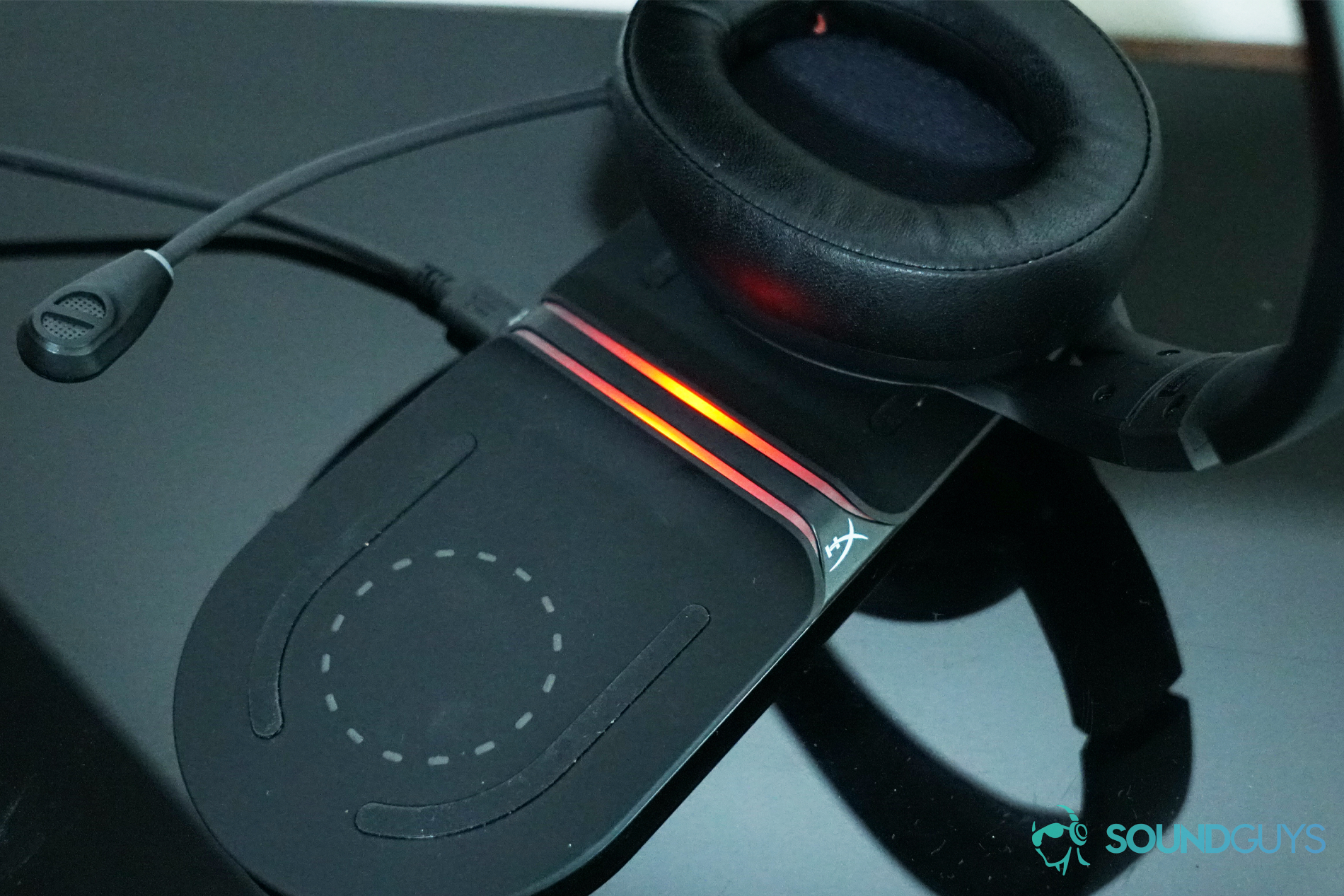
Both the HyperX Cloud II Wireless and Cloud Flight S offer better battery life than most other gaming headsets on the market. These days, it’s not unheard of for a wireless gaming headset to cross the 24 hour mark on a single charge, yet both headsets easily cross the 30 hour mark. However, as good they both are, one is certainly better.
In our testing, the HyperX Cloud II Wireless lasted 32 hours, 3 minutes at a consistent output of ~75 dB, but the HyperX Cloud Flight S lasted 35 hours, 5 minutes. The Cloud Flight S is a little bit older, so its miniUSB charging port is understandable, but it also supports wireless charging via Qi-compatible chargers. On the other hand, the Cloud II charges via USB-C.
The headsets have the same connection method
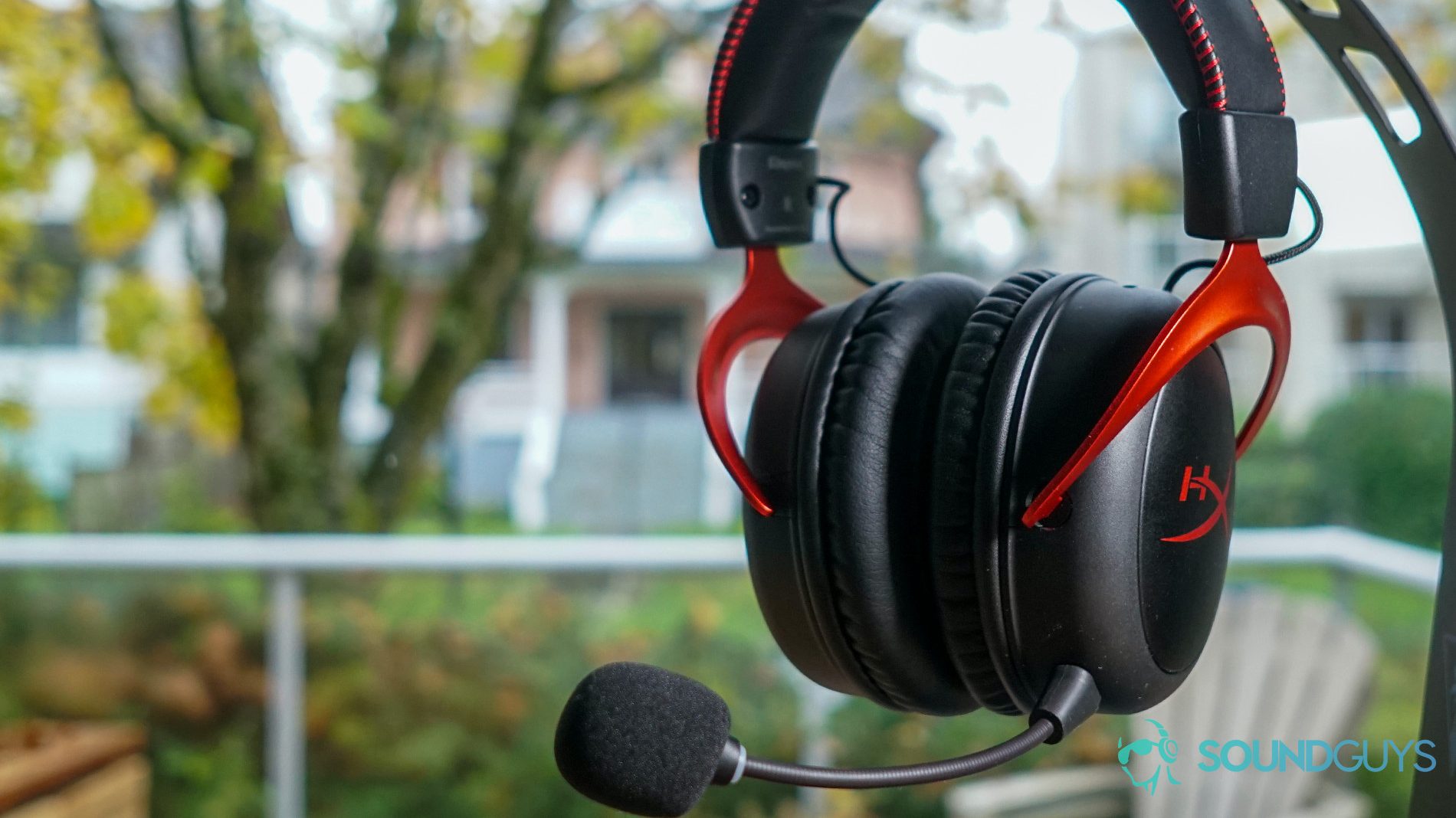
Both the HyperX Cloud II Wireless and HyperX Cloud Flight S connect to a given platform using a 2.4GHz wireless USB dongle. Neither headset supports audio transfer over their wired charging connections, nor do they sport a 3.5mm connection option. This isn’t that big of a deal if you’re gaming on PC or PlayStation consoles, but it means you won’t be able to use either headset with an undocked Nintendo Switch.
Both headsets can game on the same platforms
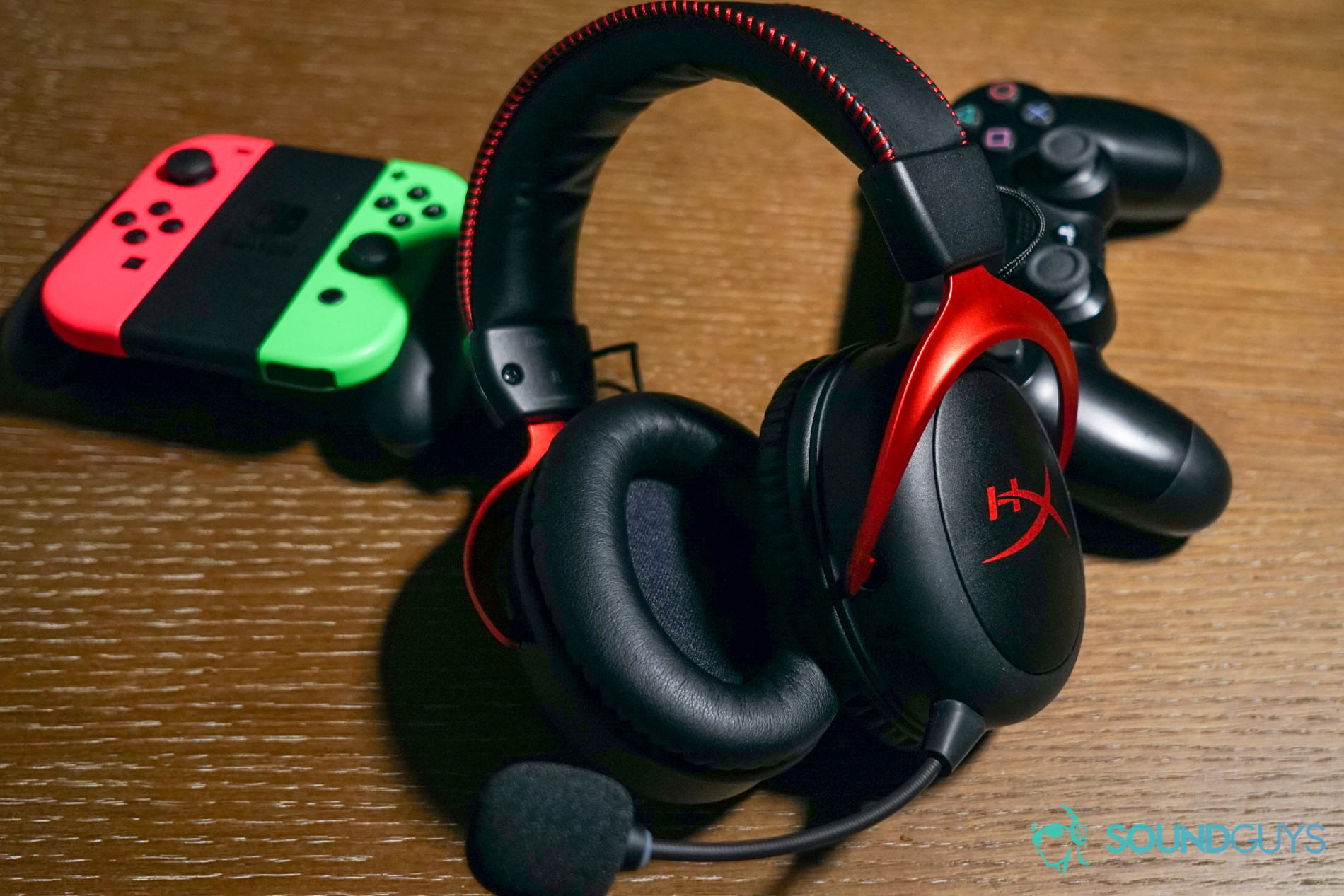
The HyperX Cloud II and HyperX Cloud Flight S offer very similar gaming experiences, with one notable exception. They’re both comfortable enough for long sessions, and they work well on PC, PlayStation 4 and 5, and the Nintendo Switch while it’s docked. On PC, both headsets can handle just about anything your throw at them using surround or stereo sound. However, only the HyperX Cloud Flight S can use surround sound on the PlayStation 4, because it doesn’t need HyperX NGenuity for the feature. Both headsets can use the PlayStation 5‘s built-in spatial audio standard just fine, which is good because the Cloud Flight S 7.1 doesn’t work on the platform.
The HyperX Cloud II Wireless offers more accurate bass response
The HyperX Cloud Flight S offers pretty accurate audio for a gaming headset, but it suffers from far more of the product category’s usual pitfalls than the the Cloud II Wireless. Look no further than the bass range of these two charts—the Cloud Flight S boosts output across the bass range quite a bit, and lacks emphasis in the mid range as well. This means that low frequency sound in different kinds of music will have plenty of added oomph to it, but you may run into issues with loud sounds make quiet ones harder to hear. In a video game, that could express itself as the din of explosions and gunfire making subtler sounds like footsteps harder to hear than intended.
Conversely, the HyperX Cloud II Wireless outputs very accurate audio for a gaming headset, with a neutral-leaning frequency response through bass and mid range. This means that while the bass won’t be as loud as with the Cloud Flight S, it’ll be just as loud as game developers and music producers intended when they mixed the audio of the media you’ll be experiencing.
The HyperX Cloud Flight S offers better isolation
The HyperX Cloud II Wireless and Cloud Flight S both offer pretty decent isolation, verging on average, but the mid range attenuation of the Cloud Flight S is superior. Neither headset will cover you for much more than the average noises of the home, but they’re not terribly portable headsets, so you shouldn’t need to worry about much more than that anyway.
These headsets’ microphones are almost identical
The HyperX Cloud Flight S and HyperX Cloud II Wireless both feature very average microphones, featuring the typical bass range attenuation found across the gaming headset market. This de-emphasis is meant to combat the proximity effect, where the bass of a nearby speaker can cause audio clipping, but it can also make people with very deep voices come through more quietly than they otherwise would. Neither mic struggles with clarity, but it’s hard to determine if either really gets the edge. It’s pretty difficult to distinguish between the microphone on the HyperX Cloud II Wireless and the one on the HyperX Cloud Flight S—listen for yourself:
HyperX Cloud Flight S microphone sample:
HyperX Cloud II Wireless microphone sample:
Which microphone do you think sound better?
HyperX Cloud Flight S vs. HyperX Cloud II Wireless: Which should you buy?
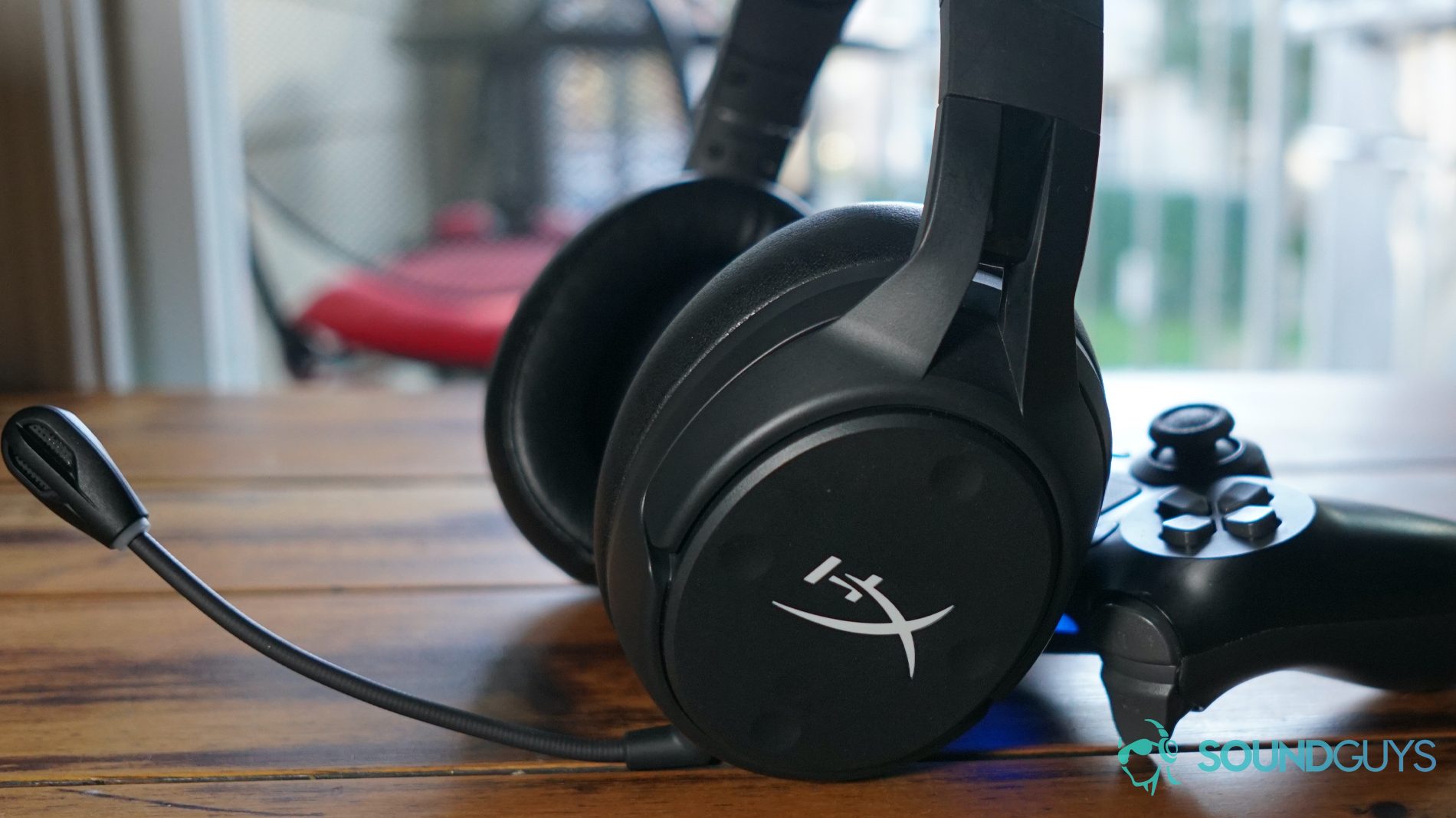
Even after this rundown, it’s hard to really recommend one of these headsets over the other. In a broad sense, they’re both very similar, and both very good. However, the differences should probably be the decider here. If you bounce back and forth between the PlayStation 4 and PC, the HyperX Cloud Flight S will let you use 7.1 virtual surround sound in both places—PlayStation 5 gamers won’t need to worry about that, because the console offers its own spatial audio feature. The ability to remap the buttons on the side of the HyperX Cloud Flight S makes that headset also a slightly better fit for people who like to tinker with their device settings and get everything working exactly how you like it.
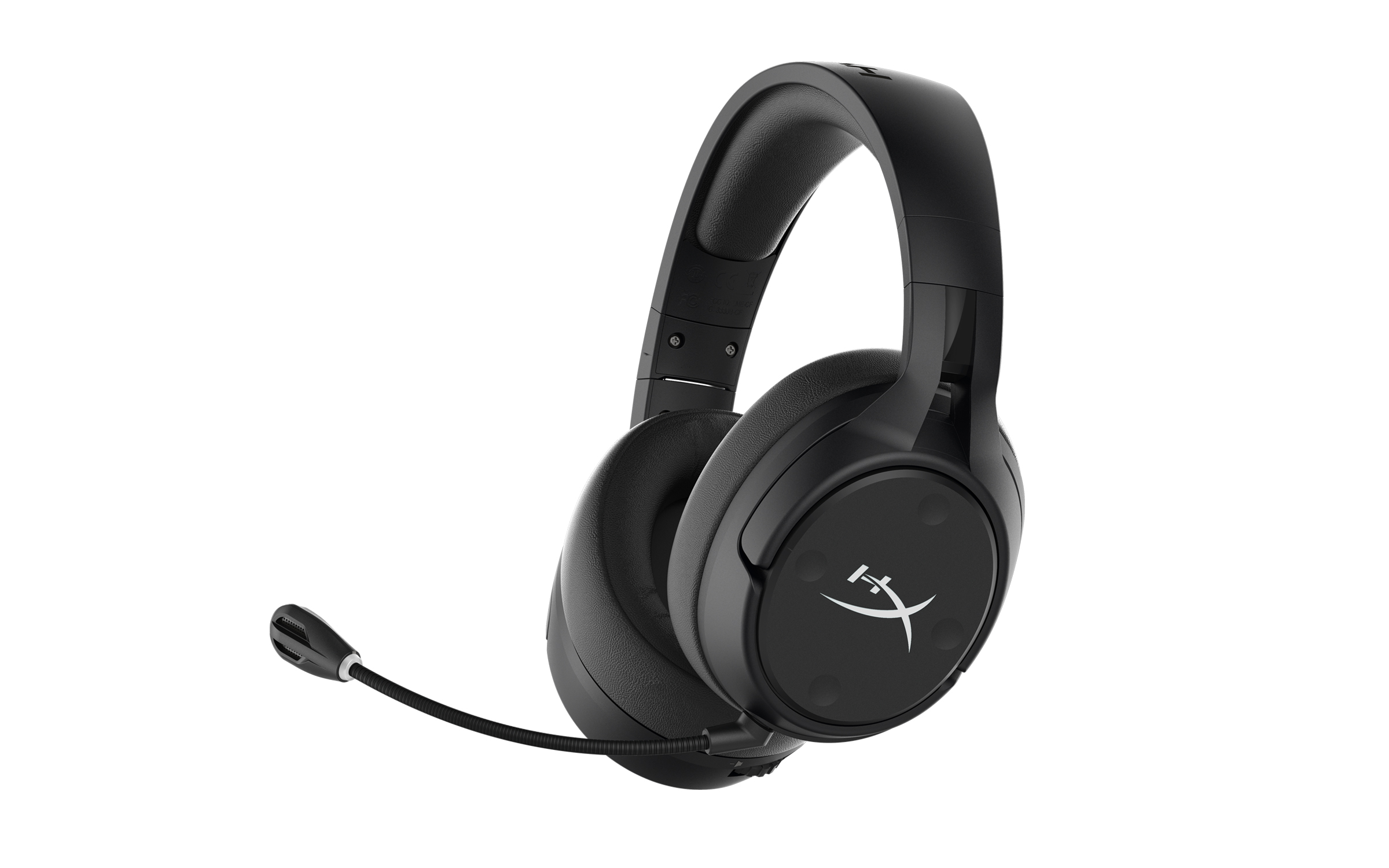
If you want something simpler, the HyperX Cloud II Wireless takes a little less getting used, and it’s a few dollars cheaper, too. People looking for the most accurate sounding audio should also aim for the Cloud II, given it doesn’t boost bass like the Cloud Flight S does.
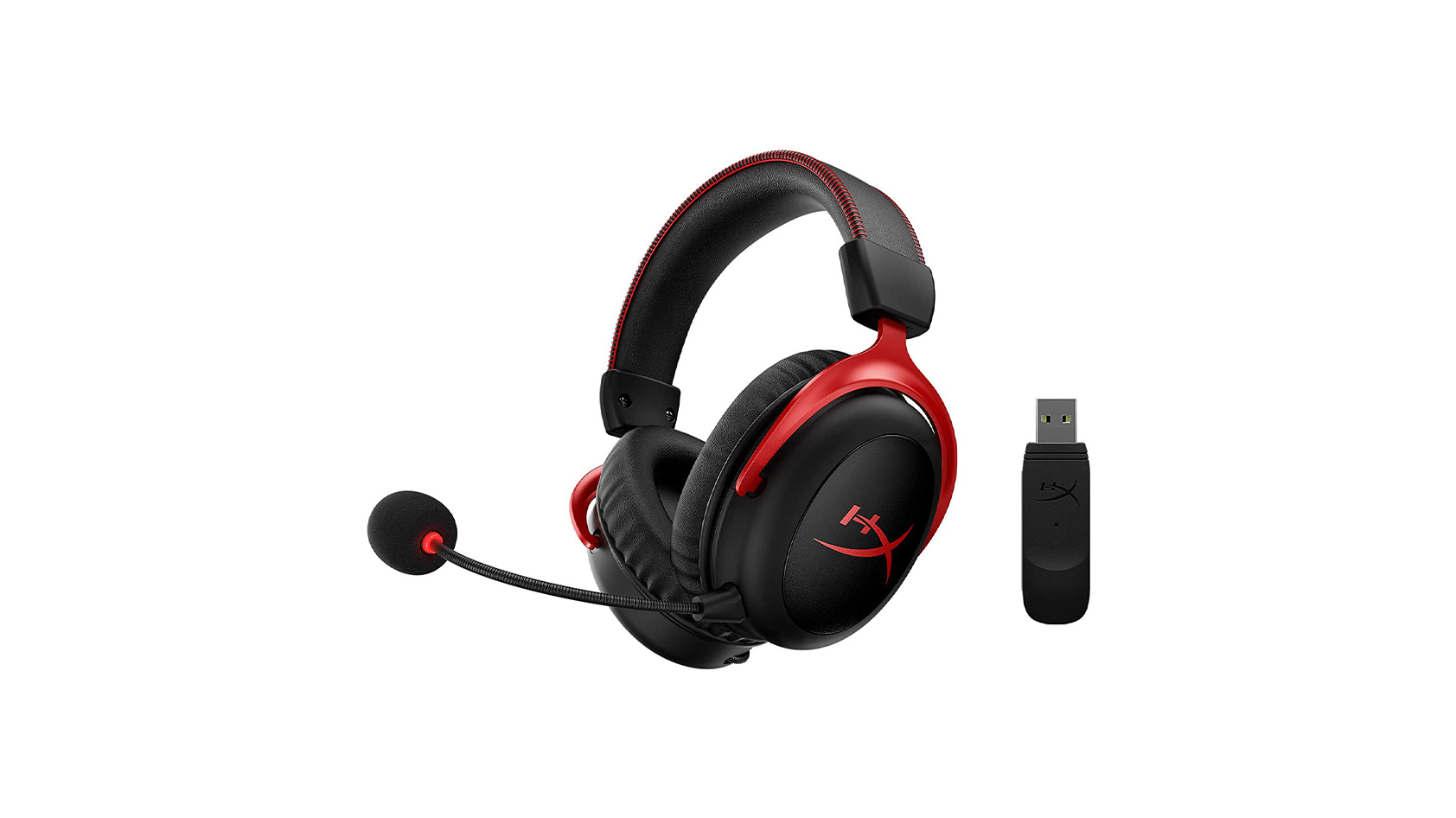
Next: Best USB microphones
Frequently asked questions
No. Both of these gaming headsets use USB for an audio connection, which Microsoft only allows when a headset is designed specifically for the platform. These headsets are designed to work on PlayStation 4 and 5, PC, and Nintendo Switch, and therefore are not compatible with Xbox consoles. You’ll have to look to Xbox-specific products like the HyperX CloudX Stinger to get your wireless fix.
The HyperX Gears of War gaming headset is just the HyperX Cloud Revolver with a new paint job—check out our review.